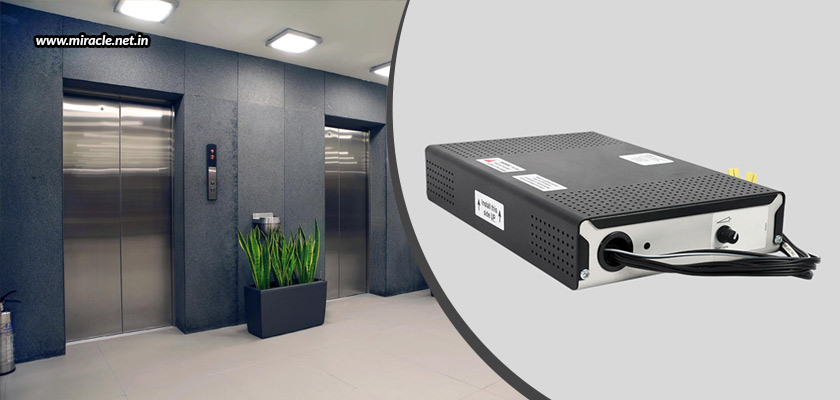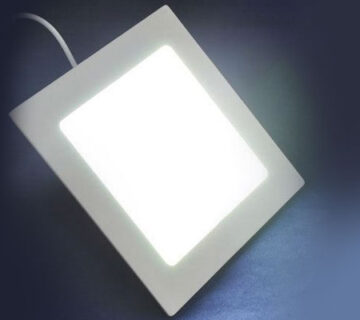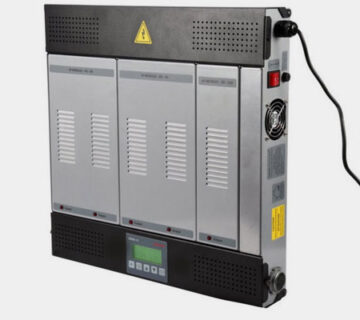Even while elevators are an indispensable part of modern structures, their lighting systems are sometimes outdated and energy-intensive. Static lighting is a hallmark of traditional setups, which lead to needless consumption of energy. Fortunately, elevator lighting has a revolutionary chance thanks to the development of smart panels and power controllers. By enabling dynamic modifications depending on variables like occupancy and ambient light levels, these cutting-edge solutions promote sustainability and energy efficiency. Building owners and operators may improve the overall user experience within the elevator, and also reduce the environmental footprint by adopting smart solutions. The move towards intelligent lighting is a major advancement in the modernization of building infrastructure and is consistent with larger initiatives to encourage environmentally friendly behaviours in urban settings.
Smart panel technology
Smart panels act as the central unit of elevator lighting systems and are equipped with sensors and advanced controls. Their functionality includes monitoring occupancy, ambient light levels, and time of day, so that lighting conditions can be optimally adjusted. Using real-time data and intelligent algorithms, these panels dynamically adjust lighting settings and achieve a balance between optimal lighting and minimal energy consumption. This function not only increases the efficiency of elevator lighting, but also promotes the sustainable development of buildings. The integration of smart panels is a significant step forward in improving user experience and energy management, which responds to a wider trend towards smarter, more environmentally conscious building technologies.
Key features of smart panels
With capabilities like occupancy monitoring, ambient light modification, and time-based scheduling, smart panels transform elevator illumination while optimising energy use and improving user experience.
- Occupancy sensing: This important function uses motion sensors to determine whether or not there are people within the elevator. Through precise measurement of occupancy levels, the lighting intensity may be dynamically adjusted by the system. For example, to save energy, the elevator may dim or turn off the lights while it is not in use. On the other hand, the lights can come on as a passenger enters the elevator, creating a cozy and secure atmosphere that guarantees security and visibility.
- Ambient light adjustment: Smart panels provide ambient light adjustment features in addition to occupancy sensors. The technology may adjust the artificial lighting to blend in with the surrounding environment by monitoring the amount of natural light entering the elevator cab using sensors or other sources. This dynamic adjustment lowers energy usage and promotes sustainability by improving vision while also reducing dependency on artificial light during the day.
- Time-based scheduling: With the help of time-based scheduling capability, smart panels may run according to a set schedule that changes according to the time of day. For instance, the system can automatically lower the lights to save energy during off-peak hours or at night. On the other hand, the lights may be turned to full brightness during rush hour or other times of heavy traffic to guarantee optimal visibility and safety for passengers.
Smart panels are redefining elevator lighting by employing these cutting-edge technologies, raising the bar for comfort, customization, and energy economy. They are a smart investment for building owners owing to their flexibility and sophisticated scheduling, which result in large energy savings.
Power controllers for efficiency
Smart panels and power controllers work together to maximize energy efficiency in elevator lighting systems. Their main job is to manage the amount of electricity that each lighting fixture receives, which allows for more accurate control and increased efficiency. These controllers guarantee that lighting runs at peak efficiency, reducing wastage and optimizing energy savings by modulating the power supply. By avoiding misuse, this fine-grained management not only increases the lighting system’s overall efficiency but also prolongs the life of the fixtures. The integration of power controllers and smart panels offers a comprehensive method of energy management for elevator lighting, helping building owners save operating expenses, while also advancing environmental objectives. This integration emphasizes how crucial complete solutions are to modernizing building infrastructure and encouraging environmentally responsible behaviour.
Key benefits of power controllers
Power controllers ensure efficiency and sustainability in elevator lighting systems by optimizing energy consumption through dynamic dimming, load monitoring, and energy harvesting.
- Dimming capabilities: Power controllers may dim LED lighting fixtures dynamically. With this feature, the lights may work at different brightness levels based on the needs of the surrounding area. For instance, power controllers can reduce the lights to save energy without sacrificing comfort or safety during low occupancy times or at night when full lighting is not required. In addition to saving energy, this dynamic dimming increases the longevity of the lighting fixtures.
- Load monitoring: Load monitoring technology is included into power controllers, which continually track each lighting fixture’s power usage in real-time. Through fine-grained monitoring of consumption of energy, the system may quickly detect inefficient fixtures or possible issues. By taking a proactive stance, it is possible to execute timely maintenance and troubleshooting, which guarantees the lighting system’s longevity and optimal performance while reducing maintenance costs and downtime.
- Energy harvesting: A few sophisticated power controllers have the ability to capture energy. These controllers use the extra energy produced by the braking or motion systems of the elevator to power the lighting system. Through the use of this captured energy, the system lessens its need on outside power sources, hence decreasing running costs and improving sustainability. The implementation of energy harvesting technology not only enhances energy efficiency but also corresponds with wider environmental campaigns that aim to lower carbon emissions and encourage the use of renewable energy sources.
With the aforementioned benefits, power controllers in elevator lighting systems maximize energy consumption, improve efficiency, and advance sustainability. They reduce expenses, increase fixture longevity, and minimize consumption via dynamic dimming, load monitoring, and energy harvesting.
Integration and scalability
The key to realizing the full potential of elevator lighting revolution is a smooth integration of power controllers and smart panels into the current elevator systems. Not only is it possible, but retrofitting conventional elevators with these cutting-edge technologies has several benefits. Buildings may improve operating efficiency and save a significant amount of energy by doing this. With this integration, the shift to more environmentally friendly activities is streamlined without necessitating significant structural adjustments. It also provides an affordable way to update buildings and bring them into compliance with changing environmental regulations. The adaptability of power controllers and smart panels guarantees their compatibility with a wide range of elevator designs, making them viable options for building owners looking to maximize energy efficiency and improve tenant satisfaction. Accepting this integration demonstrates a dedication to sustainable development and innovation in building management techniques.
Integration challenges and solutions
There are difficulties in retrofitting smart lighting technology into already-existing elevators, but creative solutions have begun appearing to get around these issues and guarantee smooth integration and improved performance.
- Compatibility: When connecting power controllers, smart panels, and the elevator’s control system, compatibility is by far the most important factor to consider. Recognizing this challenge, manufacturers are progressively providing modular and flexible solutions, which are compatible and easy to install since they are made to fit into a variety of elevator designs.
- Scalability: Another important consideration is scalability, particularly as structures expand and alter over time. Scalability is a key component of smart panel and power controller design, enabling easy extension or change of the lighting system as needed. By doing this, it is ensured that the lighting system may continue to adapt to changing building requirements without requiring significant replacement or retrofitting.
- Retrofitting complexity: Logistically, the intricate process of integrating smart lighting technology into pre-existing elevators might provide difficulties. During installation, limitations on access, challenges with downtime, and compatibility might occur. However, the retrofitting process may be expedited and completed with the least amount of disturbance to building operations by working with knowledgeable suppliers and utilizing cutting-edge installation techniques. Skilled experts can effectively handle these difficulties, guaranteeing a seamless integration of smart lighting technology without sacrificing the safety or operation of elevators.
Building owners may integrate smart lighting into elevators to improve energy efficiency, user experience, and overall building performance by addressing compatibility, scalability, and retrofitting challenges.
Elevator lighting technology has advanced significantly with the integration of power controllers and smart panels, bringing with it previously unheard-of levels of user comfort, customization, and energy efficiency. These systems have the potential to redefine elevator lighting standards by utilizing real-time data, innovative algorithms, and inventive design. This might result in the establishment of new norms for sustainability and operational excellence in the built environment. Miracle Electronics, a company well-known for its programmable power supply for LED light panel in India, is essential to this change, with state-of-the-art technologies providing exact control and smooth integration, thus allowing elevator lighting systems to operate at peak efficiency and save energy. Buildings may embrace elevator lighting technology of the future with the expertise of Miracle Electronics, which helps enhance both user experience and environmental sustainability.




